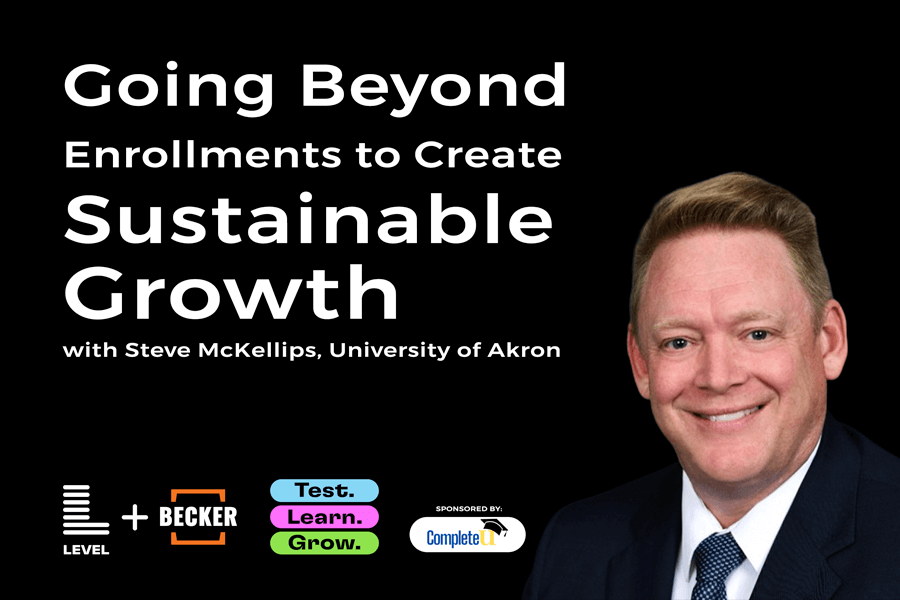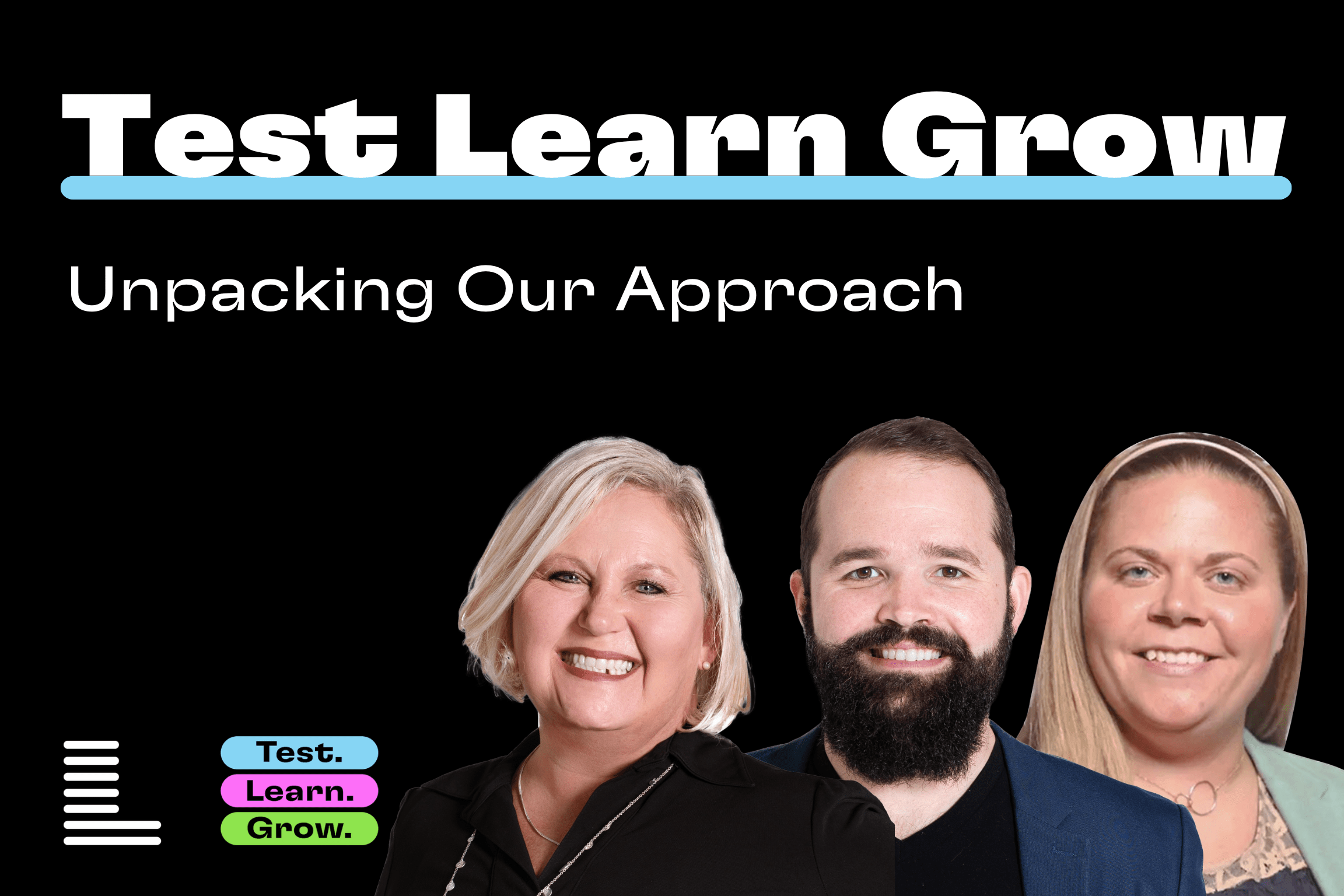Last week we talked all about the nitty-gritty of strategic planning. This week on Test. Learn. Grow. our very own Creative Center of Excellence lead and creative director, Mike Rubino gives us a few tactical ways to start brainstorming, whether it’s to start your 2023 planning or any big project.
This week you’ll learn:
- How to start applying design thinking to your brainstorming
- Why boundaries in brainstorming are a good thing
- Two brainstorming activities that will get the ideas flowing
Design Thinking 101
Design thinking is a way of approaching problem-solving with structured methods and activities that help you think more iteratively and more collaboratively. It encourages people to approach a problem like a designer, and designers love to brainstorm. The brainstorming activities Mike shares with us below are prime examples of design thinking.
Once you’ve ironed out your strategy, it’s time to have a brainstorming session. And you don’t need to only be planning big projects or an executive strategy session to use these methods. You could be a marketing manager who needs to inspire creativity during the week with your creative team on a project big or small. Either way, you need to get the good ideas flowing.
Traditional Brainstorming Rules
Traditional brainstorming rules like the Golden Circle or Blue-Sky Thinking have commonly been used. Everyone contributes ideas. Everyone says yes to everything. Everyone becomes paralyzed and intimidated by too many possibilities.
That’s why Mike gives us his best advice when it comes to brainstorming: Providing constraints and boundaries around brainstorming sessions inspires better ideas and more engagement. Here’s an example of brainstorming boundaries Mike suggests:
- Wild and divergent ideas are encouraged
- Stay as open-minded as possible
- Give prompts to focus thinking
Two Brainstorming Activities with Guardrails.
If you need a lot of ideas quickly, Mike recommends a brainstorming activity called Creative Matrix.
An example would be a series of rows and columns forming a grid. The columns might be different market audiences while the rows are different media like types of events, videos, or social media. You then focus your ideas on who you want to serve at the intersection of the rows and columns. So it could look like this: I want to reach 65-year-old retirees (column) with video (row). With a little structure, you will get a better idea from this activity.
Already have an idea, but want to make it even better? Mike suggests an activity called Round Robin. You need at most 3 people (you can have more). The first person writes down an idea and hands it off to the second person. The second person beats it up. They give all the reasons why this idea would fail. Then the third person takes a crack at it. This person creates a new iteration of the first idea that solves the critique from the second person.
This is a great approach because it’s collaborative and you come up with great ideas and they get better as you go.
The great thing about both of these brainstorming activities:
- You quickly and rapidly push ideas forward
- You’re making the ideas you have super strong
- You’re moving forward with something better than what you would have come up with on your own
With a few constraints and a bit of collaboration, your ideas for your strategic planning or a big project will be flowing in no time. How else do you brainstorm? If you need extra help with your brainstorming, reach out, we’d love to collaborate!






